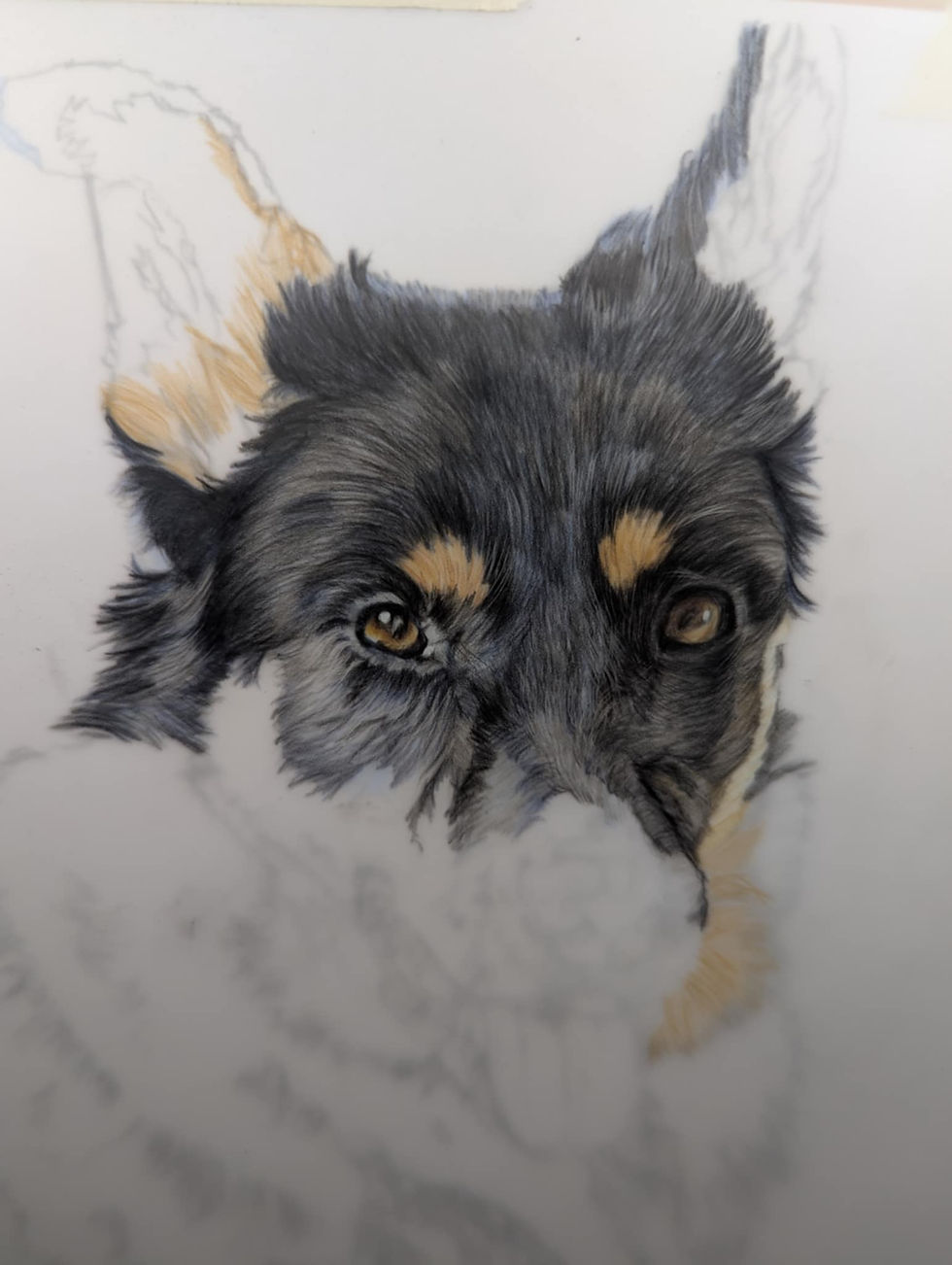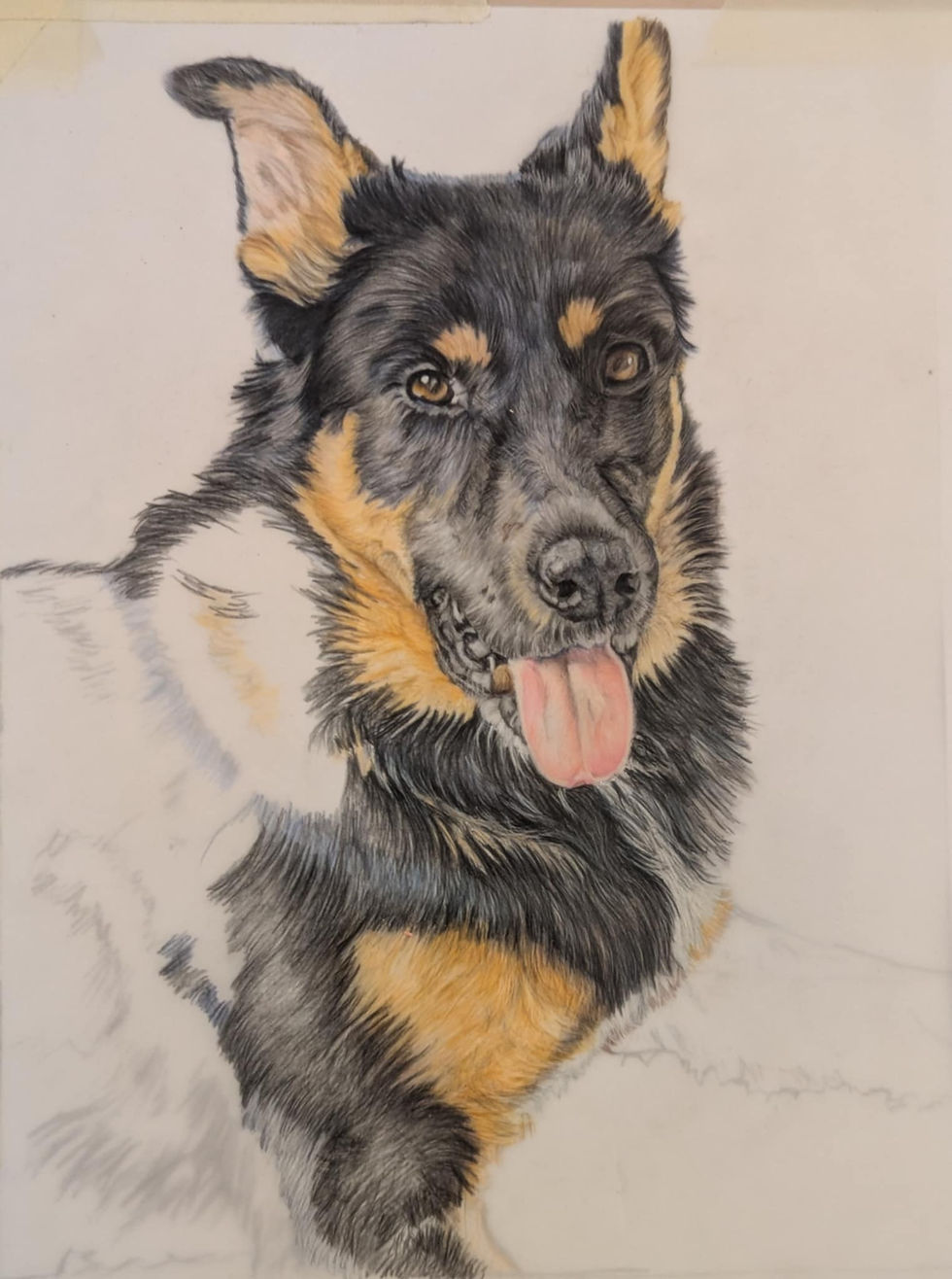Capturing Personality in Pet Portraits: Tips for Expressive Drawings
- debbielouart1
- Jul 15
- 2 min read
Creating a pet portrait is more than just getting the fur and colours right—it’s about capturing the unique spirit of the animal. From a playful glint in the eye to a tilt of the head, these little details bring your drawing to life and make it truly meaningful to the pet’s owner. In this post, we’ll explore practical tips to help you draw pet portraits that feel alive and full of personality.
1. Start with a High-Quality Reference Photo
A clear, well-lit photo is essential for capturing personality. Look for images that show the pet’s eyes clearly and reflect their typical expressions. Action shots, candid moments, or photos that highlight the animal’s unique quirks are great choices. If the pet is always sticking out its tongue or has one floppy ear, include that!

2. Focus on the Eyes
The eyes are the most expressive part of a portrait. Spend extra time getting the reflections, shape, and gaze just right. Use sharp pencils and build layers of colour and detail to create depth. Highlights and shadows in the eye give life and sparkle, turning your drawing from flat to emotive.

3. Pay Attention to Body Language
Even a headshot can hint at the animal’s mood through posture. A slightly turned head, raised eyebrows, perked ears, or a soft smile can speak volumes. If you’re including the whole body, capture signature poses—like a dog curled up tight or a cat with its paws tucked under.
4. Add Character Through Fur and Features
Does the pet have a scruffy muzzle, bushy eyebrows, or wispy whiskers? Are there markings that give it a unique expression? Embrace those features! Use directional strokes with your coloured pencils to follow the fur’s growth and texture. Add variation in colour and pressure to show softness or wiry strands.

5. Use Colour to Enhance Mood
Colour choices can help convey the personality of the pet. Bright, warm tones can express joy and playfulness, while cooler or neutral palettes might evoke calmness and gentleness. Be mindful of your background colours too—they can frame the portrait in a way that highlights the pet’s character.
6. Don't Overwork the Drawing
Sometimes less is more. Leave soft edges or areas of suggestion in parts of the fur or background so the focus stays on the expressive parts—usually the face. Letting certain areas fade slightly can add artistic flair and keep the portrait from feeling too rigid.

Final Thoughts
Capturing personality in pet portraits takes time and observation, but it’s one of the most rewarding aspects of drawing animals. When you successfully reflect an animal’s essence, your art becomes not just a picture—but a treasured memory.
Want to Learn More?
At Paws and Pencils Art, we help beginner and intermediate artists bring animals to life with coloured pencils. Join our membership to access tutorials, reference photos, and supportive community feedback to grow your skills and confidence.



Comments